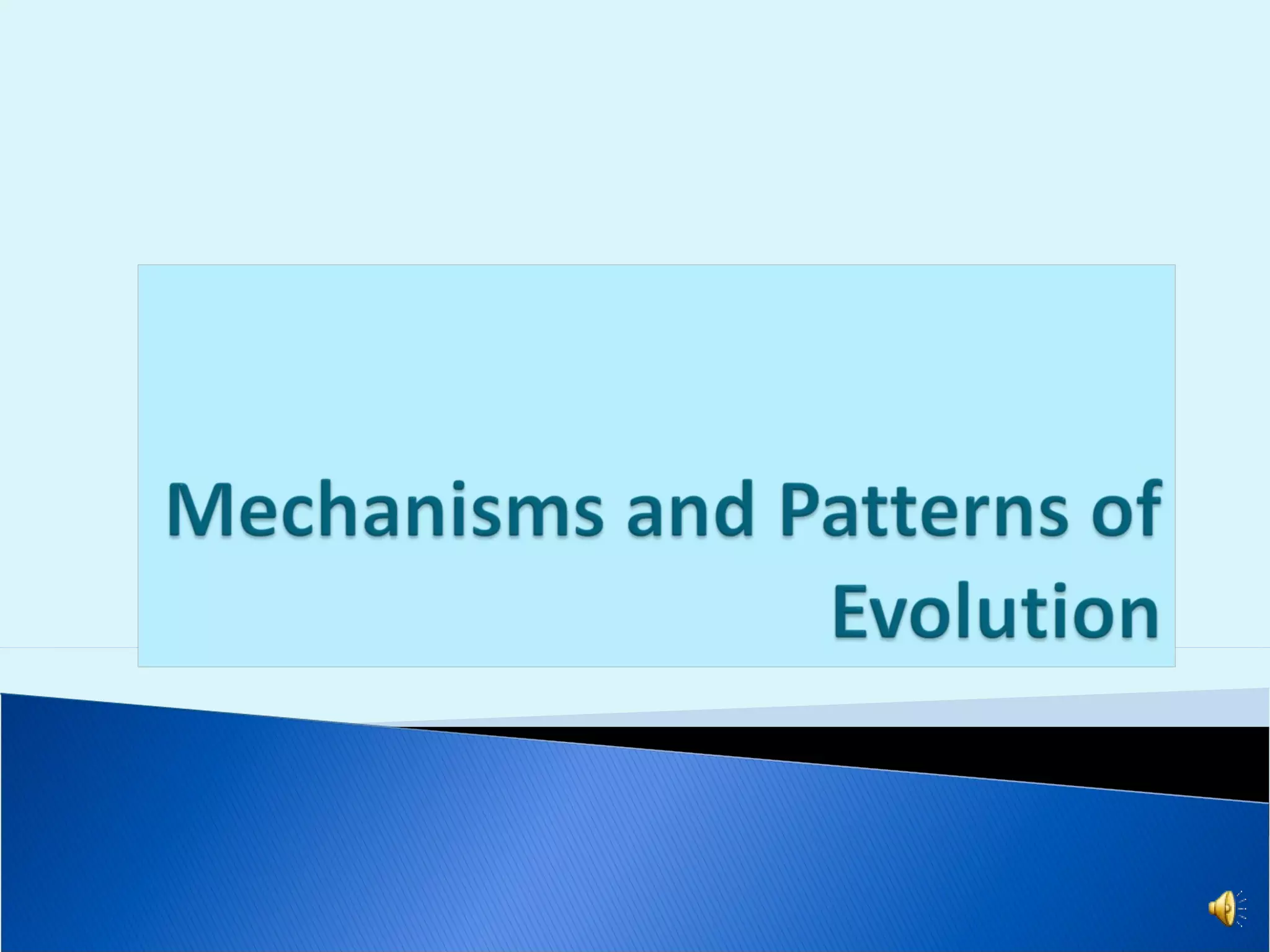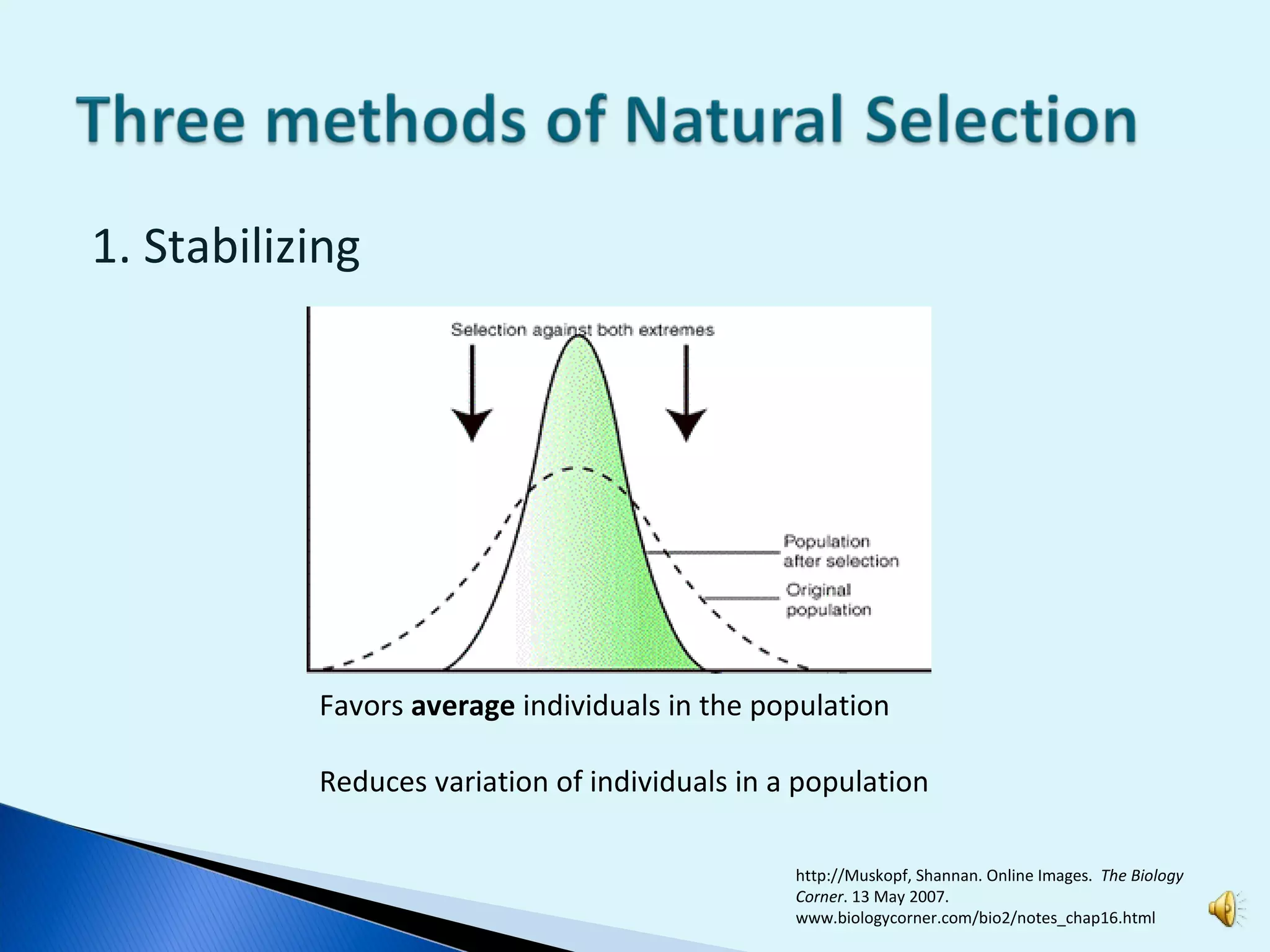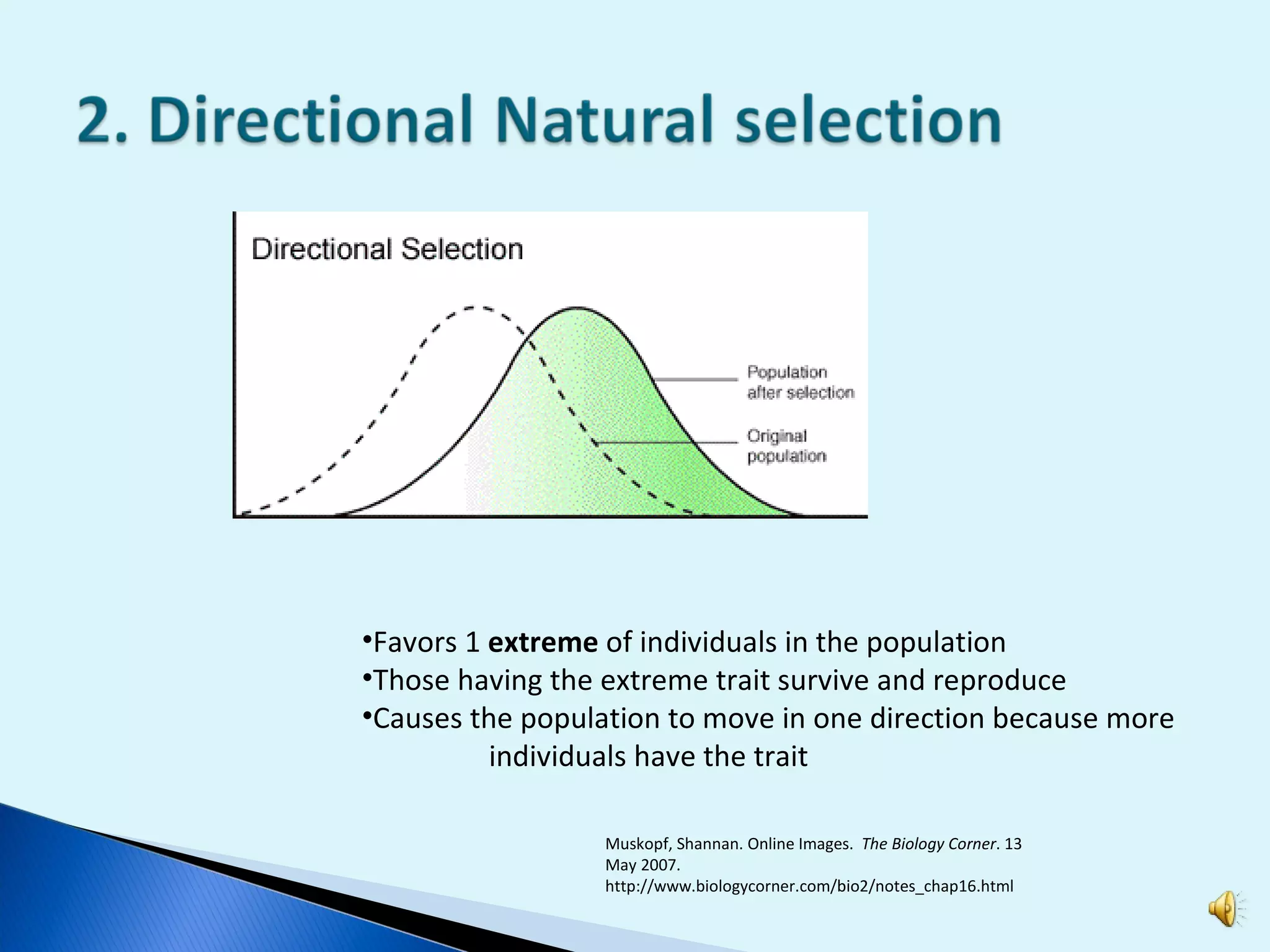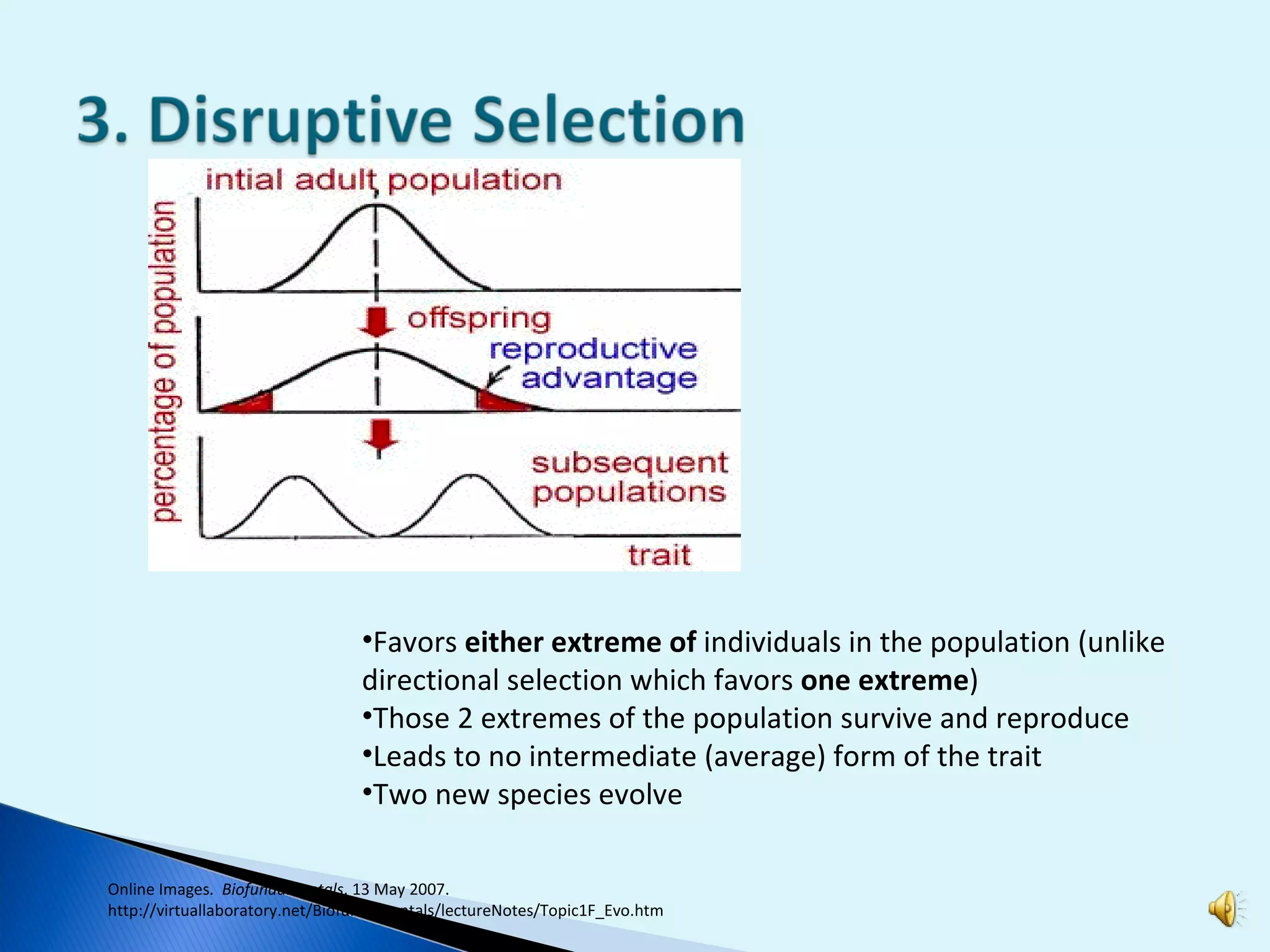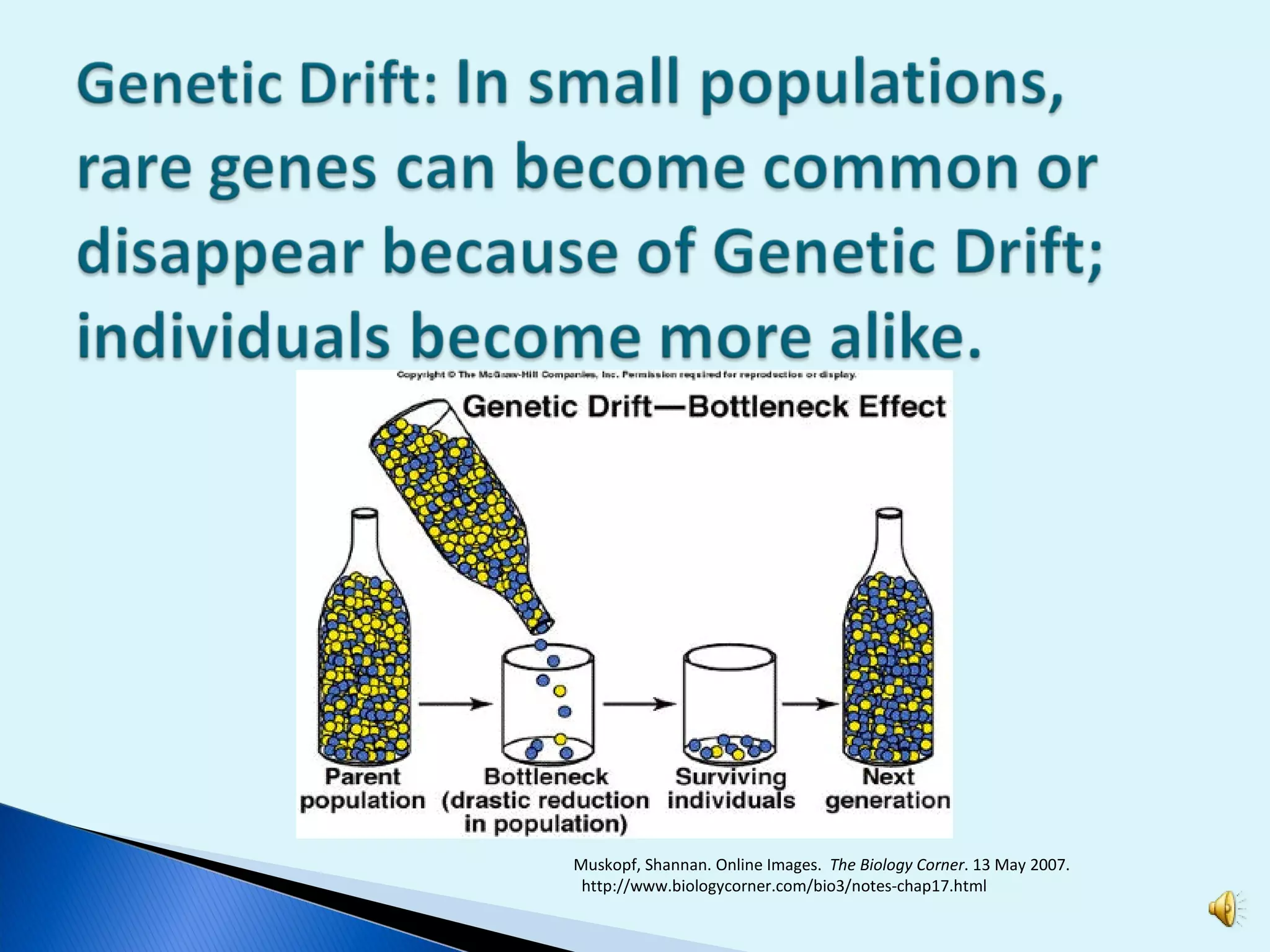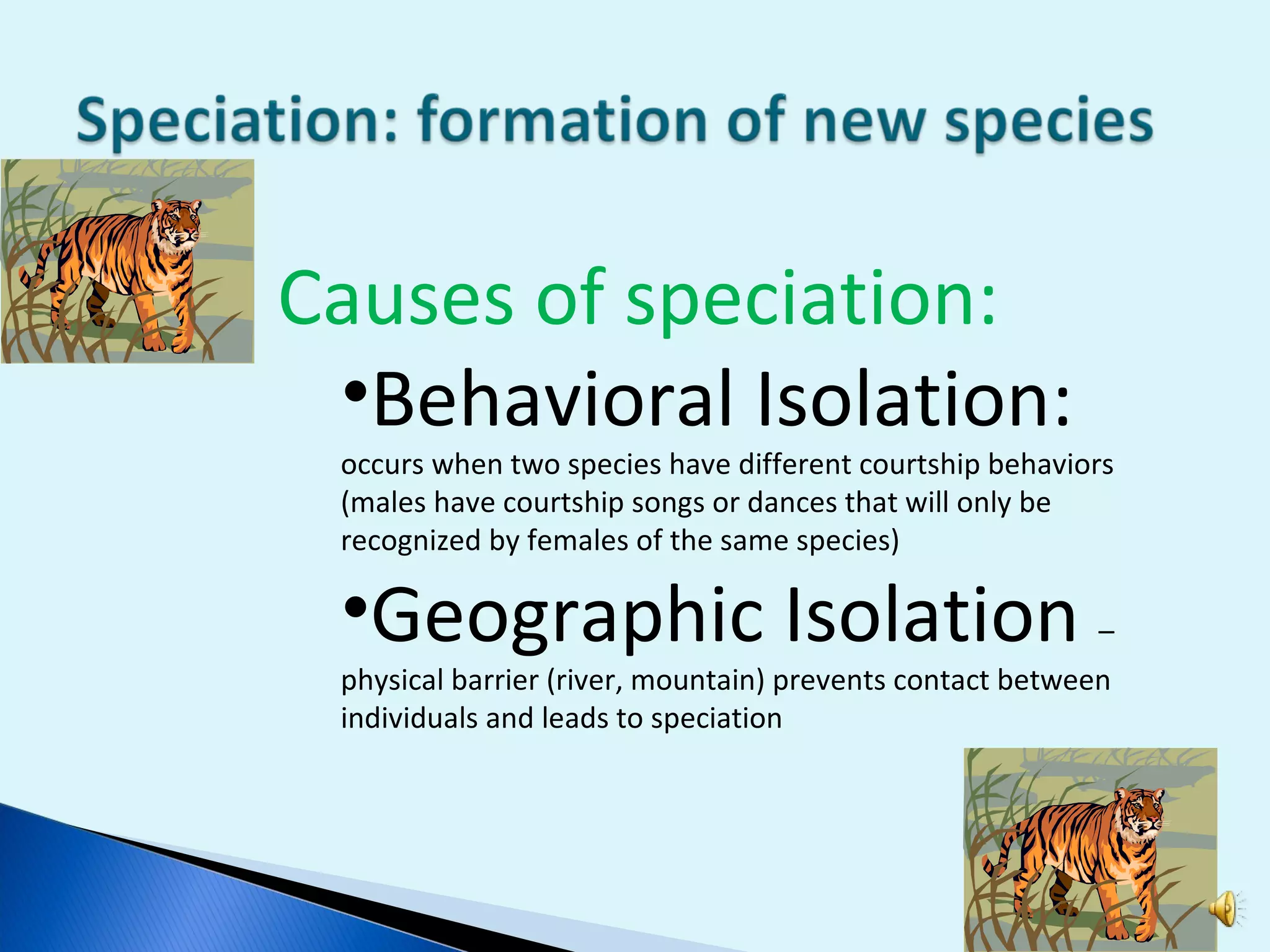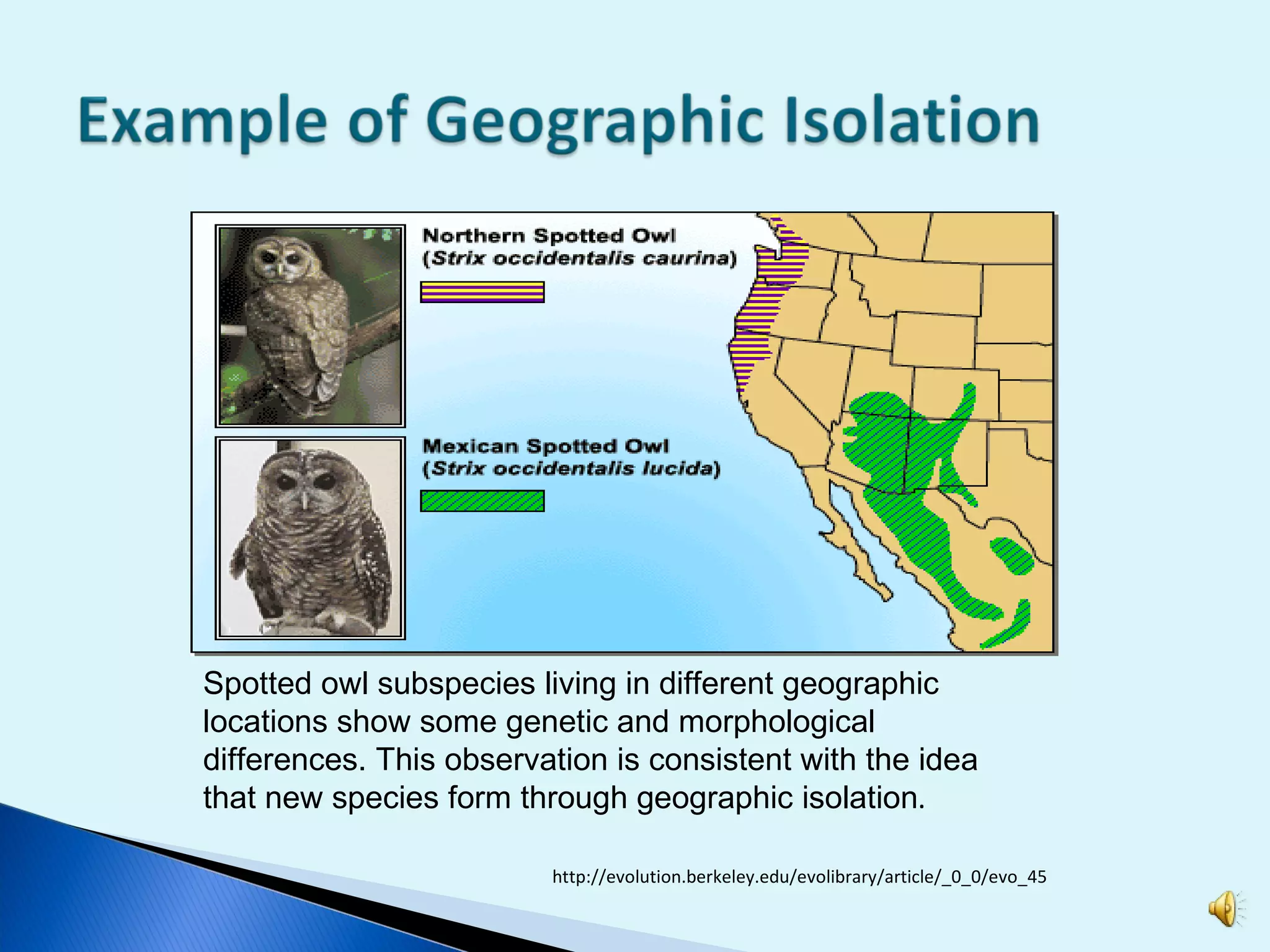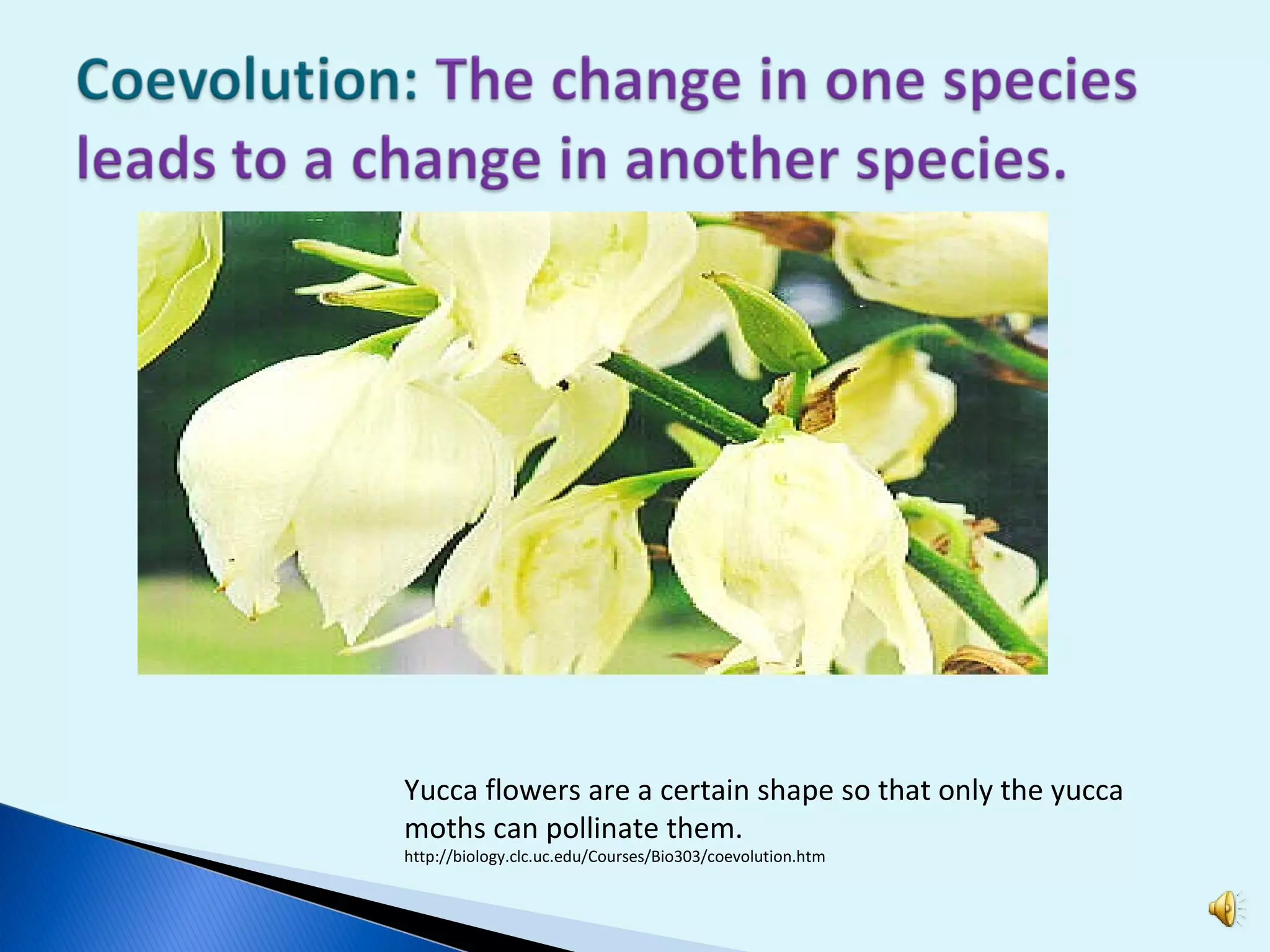Stabilizing selection favors average or intermediate traits in a population, reducing variation. This causes the population to stay the same over time. Directional selection favors one extreme trait, causing the population to evolve in one direction. Disruptive selection favors two extreme traits, leading to the emergence of two new species separated by intermediate forms. Geographic isolation and behavioral differences can cause speciation as populations separated by barriers evolve independently.
